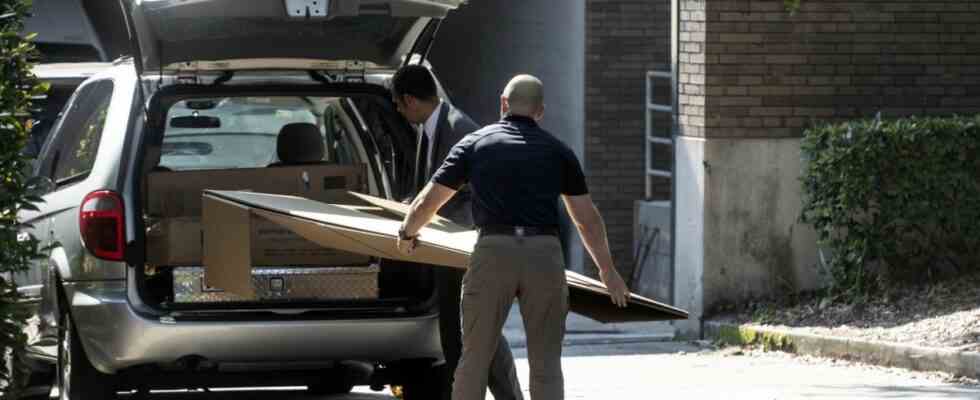The art forger Wolfgang Beltracchi was convicted for using paint containing titanium oxide, a substance not yet used in paint at Campendonk’s time, in a picture allegedly painted by Heinrich Campendonk. He was by no means the first known forger who knew how to skilfully imitate the characteristic style of an artist, but he was caught because he used contemporary paper or modern ink for historical pictures.
If the FBI’s suspicions about 25 paintings allegedly by Jean-Michel Basquiat prove true, then this group of sloppy artists could well be joined by another. In any case, on Friday the pictures, to which the Orlando Museum of Art is currently dedicating a separate exhibition, titled “Heroes & Monsters”, were confiscated and taken away for further examination.
Basquiat is said to have painted the Fed-Ex box in 1982, but it can’t be that old
Investigators have been eyeing the collection, which, if genuine, would be worth at least $100 million. But what led to the confiscation was a testimony from a former Fed-Ex graphic designer. At least one of the works, said to have been created in 1982, is painted on the back of a FedEx box, which is printed with fold-and-seal instructions in a font the shipping company didn’t introduce until 1994, six years after Basquiat’s death.
Apparently time was of the essence: after the FBI art detectives began their investigations at the beginning of March, the museum announced that it would be closing the exhibition, which was originally supposed to run until 2023, on June 30. According to the museum, it should be shown in Italy. Investigators feared that the pictures were to be taken out of the country to prevent American authorities from accessing them.
The origin story disseminated by the museum goes like this: Basquiat painted the 25 previously unknown pictures in 1982 when he was subletting from the art dealer Larry Gagosian in Venice Beach, California. The young art star, in constant need of fresh cash for drugs, allegedly sold them for $5,000 to screenwriter Thad Mumford (“The Cosby Show”, “M*A*S*H”, “Sesame Street”), who stored them and then apparently soon forgot.
Because Mumford did not pay the rent for the warehouse, the contents, including the supposed Basquiat works, were auctioned off in 2012. Two self-proclaimed “treasure hunters” were awarded the contract. Together with a lawyer, they managed to convince the director of the Orlando Museum of Art, Aaron De Groft, of the authenticity of their spectacular find. To this day, De Groft maintains that the pictures are authentic, although the doubts are becoming ever more overwhelming. For example, an FBI agent said Mumford said when questioned in 2014 that he had never bought any Basquiat movements or kept them in the storage room. In 2017 he is said to have testified to this in writing. In 2018 he died.
So far, no one knows who the Basquiats forger could be, if they are indeed fakes. In any case, the counterfeiting work would be worthwhile. Up until a month ago, when Andy Warhol’s “Marilyn” sold for $195 million at auction, a Basquiat painting was the most expensive piece of contemporary art in the world.

